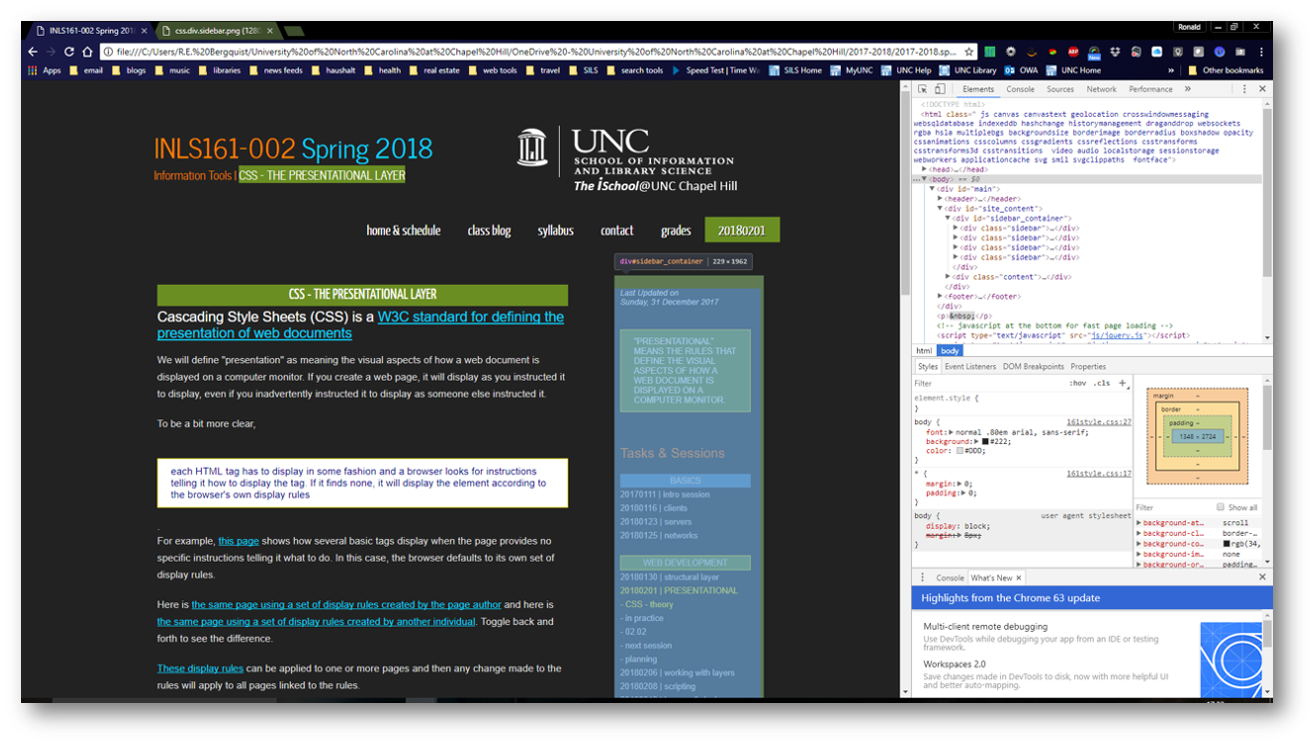Class Schedule
22 AUG | intro
27 AUG | clients
29 AUG | servers
05 Sep | networks
10 Sep | basics lab
12 Sep | structural layer
17 Sep | presentational layer |
in practice |
02.02 |
planning |
next session
19 Sep | working with layers
24 Sep | behavior layer
26 Sep | images & design
01 Oct | website lab
03 Oct | object layers
08 Oct | tools that read markup
10 Oct | document markup lab
15 Oct | spreadsheets
17 Oct | formulas & functions
22 Oct | data display
18 Oct | Fall Break
24 Oct | database tools
29 Oct | spreadsheets lab
31 Oct | relational databases
05 Nov | tables
07 Nov | relationships
12 Nov | input & output
14 Nov | SQL
19 Nov | complex queries
26 Nov | databases lab
21 Nov | Thanksgiving
28 Nov | presentation design
03 Dec | presentation delivery
05 Dec | presentation lab
12 Dec | 0800-1100 | final in class presentation

This work
is licensed under a
Creative Commons Attribution-NonCommercial-ShareAlike 3.0 Unported License.
home & schedule | class blog | syllabus | contact | grades
"Presentational" means the rules that define the visual aspects of how a web document is displayed on a computer monitor.
CSS - the presentational layer
Cascading Style Sheets (CSS) is a W3C standard for defining the presentation of web documents
We will define "presentation" as meaning the visual aspects of how a web document is displayed on a computer monitor. If you create a web page, it will display as you instructed it to display, even if you inadvertently instructed it to display as someone else instructed it.
To be a bit more clear,
each HTML tag has to display in some fashion.
and a browser looks for instructions telling it how to display the tag.
If it finds none, it will display the element according to the browser's own display rules
For example, this page shows how several basic tags display when the page provides no specific instructions telling it what to do. In this case, the browser defaults to its own set of display rules.
Here is the same page using a set of display rules created by the page author and here is the same page using a set of display rules created by another individual. Toggle back and forth to see the difference.
These display rules can be applied to one or more pages and then any change made to the rules will apply to all pages linked to the rules.
W3Schools has a similar example.
back to top
Let's look at this page in terms of its CSS elements and rules

If you right click and open the image in a new tab, you can see how the sidebar is a <div> element, with specific CSS instructions telling it how to display.
back to top
Benefits of CSS
Greater typography and page layout controls
Greater control over how your type displays; you can be explicit in your definitions
Less work
One edit, multiple simultaneous corrections; really useful in a large site
Potentially smaller documents
You need only create a link to a single list of rules, rather than recreate the rules in each page you create.
Let's go back and look at our MSWord-created page for a comparison. It has all the display rules for all the possible tags embedded in the page file.
Potentially more accessible documents
Though it is easier to control the placing of objects on a web page using visual tools such as tables, such tables are not always useful for all users.
CSS guidelines allow you to build pages that are accessible by a far wider span of potential users.
Presentational HTML is on its way out
Mixing the rules about what an object means and how it should look on a single page is a thing of the past.
Even though current browsers still support such activities, eventually they will drop this ability and all pages will need to conform to the CSS standard
You will follow CSS rules for your task 02, so it would be a good idea to get used to them now
CSS is well-supported
The CSS3 specification is the latest complete standard for Cascading Style Sheets. CSS3 is completely backwards-compatible with earlier versions of CSS.
